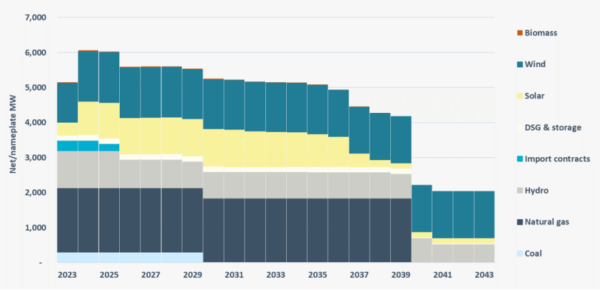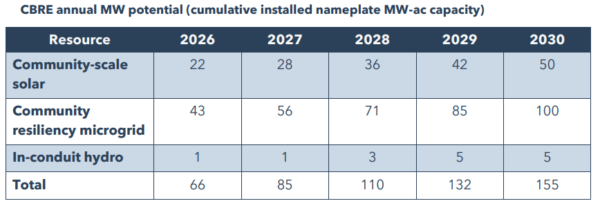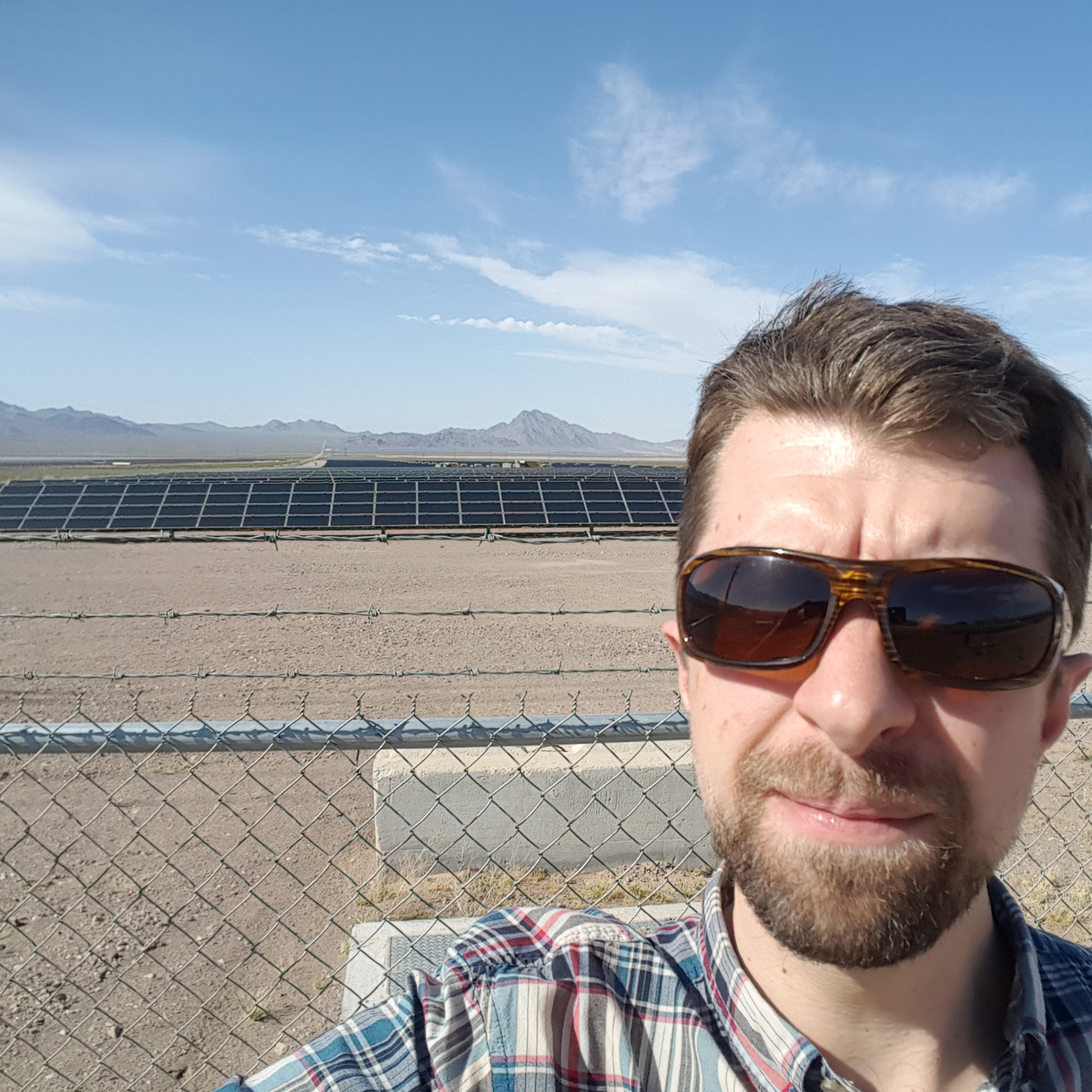Portland General Electric, a public utility providing electricity to 51 Oregon cities, filed an Integrated Resource Plan and its inaugural Clean Energy Plan, which calls for a net zero power generation mix by 2040.
To date, PGE has reduced emissions from power sold to Oregonians by 25% below 2010-2012 baseline emissions. The utility has plans of reducing emissions by 80% by 2030, and to be fully net zero the following decade. To access the full IRP and Clean Energy Plan (696 pages), click here.
PGE’s roadmap to a sustainable energy mix includes the development of new utility-scale renewable projects like wind turbines and solar arrays, located both in-state and out-of-state, and power transmission upgrades to modernize the grid and bring clean energy to its 900,000 plus customers.
To address its clean energy goals, PGE forecasts a significant power capacity need of 1.14 GW in summer, 1 GW in winter, and up to 2.5 GW nameplate capacity clean energy assets by 2030.
According to the American Clean Power database, Oregon ranks 12th in the U.S. for renewable energy production with 4.9 GW of installed wind, solar and energy storage generation resources, with renewables representing 17.3% of the state’s energy mix.

PGE
Community solar
Additional programs such as energy storage and expansion of its community-based solar, storage, energy efficiency and demand response programs such as virtual power plants are all on the table. The utility said its IRP calls for 155 MW of community-based projects by 2030, with 66 MW of projects to be deployed through 2026 alone.
Under statute HB 2021, Oregon defines community-based renewable energy projects as systems that provide community benefits through a community benefits agreement or direct ownership. The desire for local benefits is reflected in different ordinances and climate action plans by local governments and municipal entities. For example, Portland and Multnomah County have both stated goals in their Climate Action Plans that call for 2% of their 2030 clean energy targets to be met with community-based renewables and infrastructure.

PGE
PGE’s support of community-based projects is both established and evolving, the utility says in its roadmap. The company sees more opportunities of pairing community-scale and customer-sited generation with energy storage, flexible loads and energy-related infrastructure.
As required by ORS statute 469A.210, PGE has an existing 10% small-scale renewable requirement. It expects the community-based program to contribute to that requirement, using 20 MW and smaller projects.
Moving forward, PGE expects the following items to contribute to its community-based program expansion:
- Existing programs and procurement strategies such as Wholesale projects smaller than 20 MW, including PURPA, bilateral contracts and CBREs
- Oregon Community Solar Program (projects capped at 3 MW)
- New resources, programs and strategies such as Community Request for Proposals (RFP)
- Virtual power plant (VPP)
- Federal/local incentives
The Oregon Public Utilities Commission inaugurated the first three statewide community solar projects in March 2021.
Microsoft, Nike and Common Energy are partnered offtake parties to Standard Solar in Oregon’s community solar market, with more than 100 Nike employees in Oregon subscribing to the Skyward Solar project, a 2.5 MW project in Boring, Ore.
Utility solar
PGE’s IRP bases its solar photovoltaic (PV) resource definition on three projects: one central Oregon location near Christmas Valley, one location near Wasco, Ore., and one location in the Willamette Valley near McMinnville, Ore.
A solar PV facility located near Mead, Nevada, that will be accessed via incremental transmission action, is also included in PGE’s IRP analysis. Each location is modeled using identical parameter assumptions.

Portland General Electric
“This plan reflects the values and expectations of our customers who, for decades, have made clean energy a top priority,” said Maria Pope, president and chief executive officer of PGE. “Achieving decarbonization will require continued collaboration with our customers and community partners at the local, state and federal levels. At PGE, we are committed to making the investments in innovation, diverse resources and the electric grid necessary to decarbonize our energy system, while we continue to focus on affordability during the clean energy transition.”
Portland General Electric is a public utility company providing electric service to more than 900,000 customers in 51 Oregon cities, and is one of the three investor-owned utilities providing power across the state.
This content is protected by copyright and may not be reused. If you want to cooperate with us and would like to reuse some of our content, please contact: editors@pv-magazine.com.









By submitting this form you agree to pv magazine using your data for the purposes of publishing your comment.
Your personal data will only be disclosed or otherwise transmitted to third parties for the purposes of spam filtering or if this is necessary for technical maintenance of the website. Any other transfer to third parties will not take place unless this is justified on the basis of applicable data protection regulations or if pv magazine is legally obliged to do so.
You may revoke this consent at any time with effect for the future, in which case your personal data will be deleted immediately. Otherwise, your data will be deleted if pv magazine has processed your request or the purpose of data storage is fulfilled.
Further information on data privacy can be found in our Data Protection Policy.